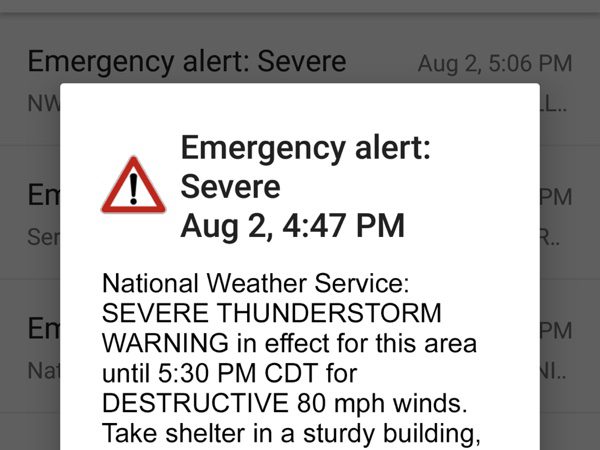NOTTINGHAM, MD—Severe Thunderstorm Warnings will become a bit more specific later this month, depending upon their severity.
Beginning on July 28, the National Weather Service will better convey the severity and potential impacts from thunderstorm winds and hail by adding a “damage threat” tag to Severe Thunderstorm Warnings, similar to current Tornado and Flash Flood Warnings.
The NWS has developed three categories of damage threat for Severe Thunderstorm Warnings to distinguish between high-impact and low-impact events. The categories, in order of highest to lowest damage threat, are destructive, considerable, and base. These tags and additional messaging are designed to promote immediate action, based on the threats.
- The criteria for a destructive damage threat is at least 2.75 inch diameter (baseball-sized) hail and/or 80 mph thunderstorm winds. Warnings with this tag will automatically activate a Wireless Emergency Alert (WEA) on smartphones within the warned area.
- The criteria for a considerable damage threat is at least 1.75 inch diameter (golf ball-sized) hail and/or 70 mph thunderstorm winds. This will not activate a WEA.
- The criteria for a baseline or “base” severe thunderstorm warning remains unchanged, 1.00 inch (quarter-sized) hail and/or 58 mph thunderstorm winds. This will not activate a WEA. When no damage threat tag is present, damage is expected to be at the base level.
On average, only 10 percent of all severe thunderstorms reach the destructive category each year, nationwide. Most of these storms are damaging wind events such as derechoes and some of the larger, more intense thunderstorms, called “Supercell” storms that can typically produce very large hail in their path.
The new destructive thunderstorm category conveys to the public urgent action is needed, a life-threatening event is occurring and may cause substantial damage to property. Storms categorized as destructive will trigger a WEA to your cell phone.
All National Weather Service Severe Thunderstorm Warnings will continue to be issued and distributed via https://www.weather.gov, NOAA Weather Radio, Emergency Alert System and through dissemination systems to our emergency managers and partners.
Do you value local journalism? Support NottinghamMD.com today.

